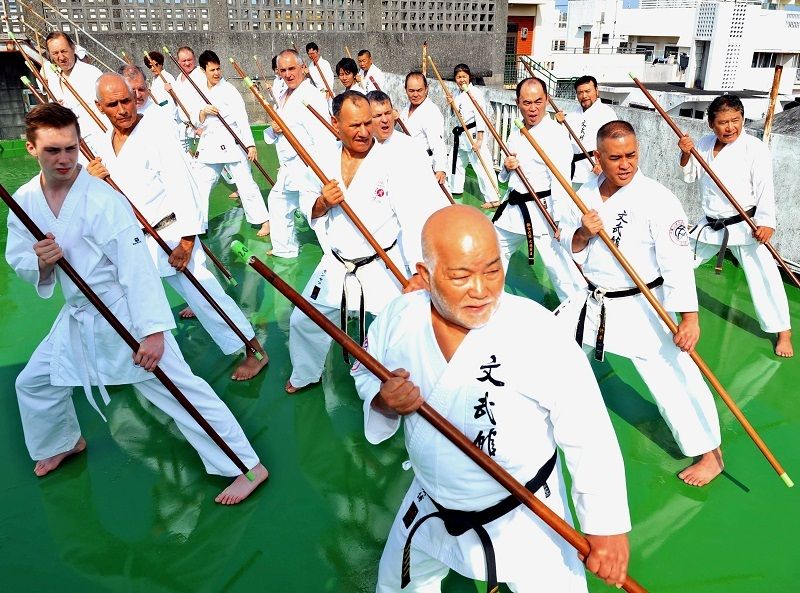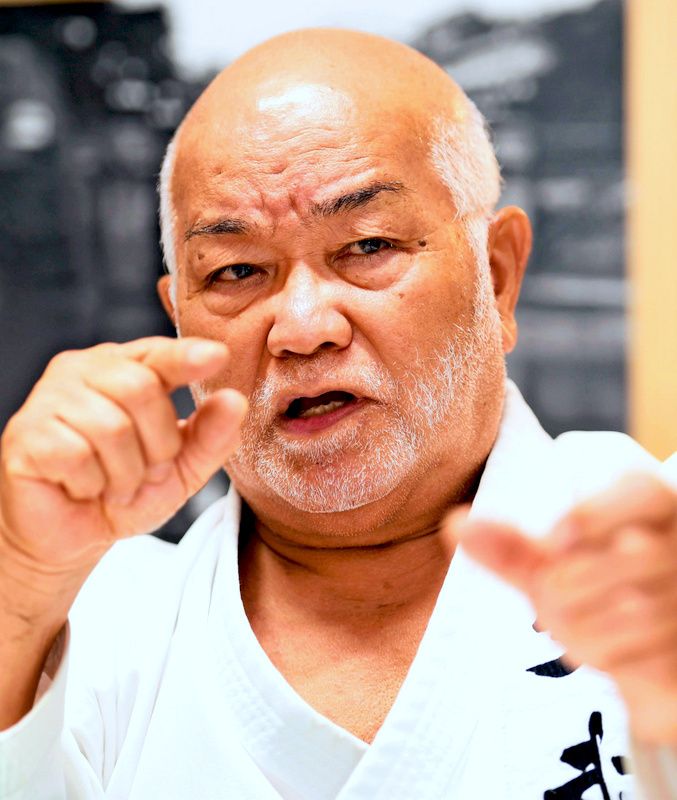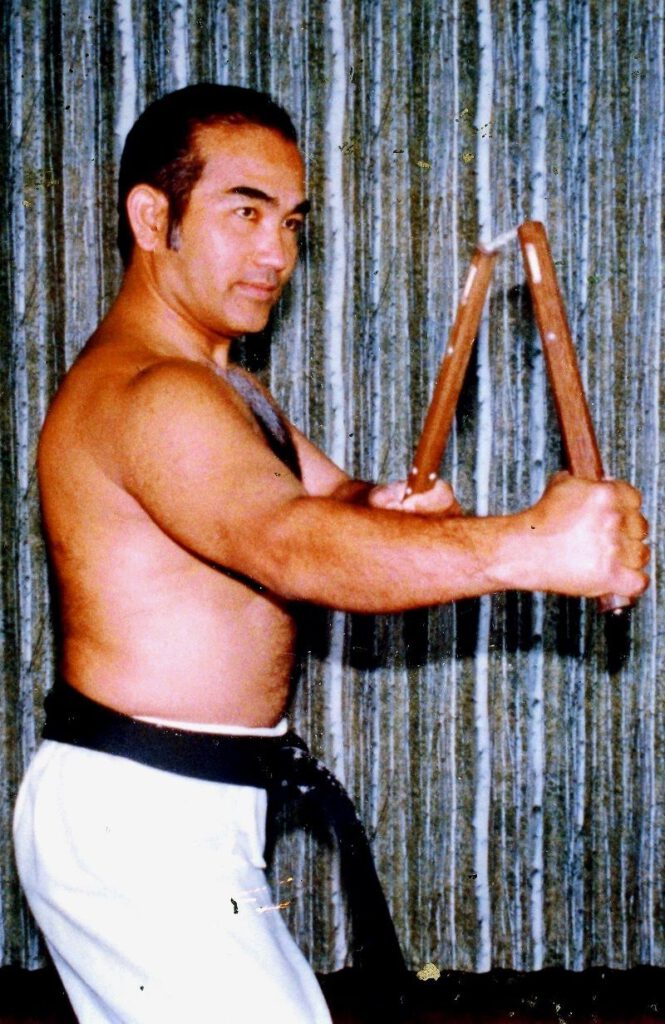Translation of an article from Okinawa Times, April 17, 2017.
“Kobudō is my life. I have been pursuing it all my life, but research is endless.” Nakamoto Masahiro (79), who was selected as the only intangible cultural property holder in the field of Kobudo designated by the prefecture, wakes up at 3:00 every morning and devotes himself to researching and practicing the methods of using eight types of weapons such as bō and nunchaku. It has been 55 years since he decided to succeed Kobudo, which was in danger of decline, and knock at the gate of master Taira Shinken at 24. The skills and heart he has cultivated are taught at the “Bunbukan,” the headquarters of the Okinawa Traditional Kobudo Preservation Society in Shuri Torihori Town, Naha City.
He was raised in a single-mother household, and life was poor. While attending part-time senior high school, he got a job at the United States Civil Administration of the Ryukyu Islands (USCAR, 1950-1972). From the age of 20, he studied Karate under Chibana Choshin of Shorin-ryu, a friend of his father, but had nothing to do with Kobudo.
The turning point was when he was 24 years old. “Karate remains, but Kobudo will perish. Do not only Karate but also Kobudo,” said Shannon McKune, a civil affairs officer who was the boss of the workplace. He said he had worked in the United Nations Educational, Scientific and Cultural Organization (UNESCO) department for registering cultural heritage. At this time, “I realized my destiny.”
Taira refused him many times, but he begged in front of his house on one cold winter night, saying, “I won’t go home until I get started,” and was finally allowed to begin training. The world of Kobudo that he saw for the first time made him “immensely curious because it had a lot of weapons.”
Although he was worried about doing the same thing many times over, he spent every day entirely. “By doing Kobudo, you can understand the strengths and weaknesses of weapons, and you can add depth to karate.” He learned it parallel with Karate and qualified as a Kobudo shihan (master) in 1970. He was appointed as a branch of Taira’s dojo and became independent in 1982.
A long time ago, he had the opportunity to try and thrust a karate master’s chest with a bō and knocked him down easily. “I think it would have been dangerous if it was the solar plexus. After that, that master told his disciples, ‘Everyone should go to learn Kobudo.’ The Karate circles are sometimes jealous of Kobudo, but there were also such humble people.” Like this, he recalls the experience of mutual recognition.

Mr. Nakamoto Masahiro (front) performs a kata of bōjutsu with his at the Okinawa Traditional Ancient Budo Preservation Society, General Headquarters “Bunbukan” in Shuri, Naha City. 
Mr. Nakamoto Masahiro talks about his passion for Kobudo at the Okinawa Traditional Kobudo Preservation Society, General Headquarters “Bunbukan” in Shuri, Naha City. 
When he was 42 years old. Mr. Nakamoto Masahiro assumes a middle-level posture of nunchaku-jutsu.
Because you cannot actually injure your opponent, he says that he often aims at the legs with the bō. “That’s why I also train my legs.” I was surprised to see him hitting his shin with an iron hammer in front of an international student who came to the dojo.
When talking about the past, he often uses the word “luckily/fortunately.” He studied under Chibana and Taira, and many others. He visited the headwaters of Kobudo and studied abroad in China as a government-financed international student, and learned the ground fighting techniques that had declined in Okinawa from a Living National Treasure. Blessed with many teachers, he compiled the ancient martial arts of Okinawa. “The encounter with important persons when I was young changed my life,” he said.
“Both Taira Sensei and Chibana Sensei were gentle and kind,” says Nakamoto. He treats his disciples in the same way.
Currently, about 60 people are enrolled in the dojo. He had about 3,000 students over the course of 45 years, including international students. “Today, karate teachers also have become more aware of Kobudo.” Envisioning the ideal form of Karate and Kobudo, “I hope they can run smoothly as two wheels of a cart (=two halves of the whole).”
Profile: Nakamoto Masahiro was born on January 15, 1938, in Shuri, Naha City. From the age of 20, he studied under Shuri-te master Chibana Choshin. At the age of 24, he started Kobudo under Taira Shinken. In 1982, the Okinawa Traditional Kobudo Preservation Society was established. In 2013, he was certified as an “intangible cultural property holder in the field of Okinawa Karate / Kobujutsu” designated by Okinawa Prefecture.
© 2020, Andreas Quast. All rights reserved.
